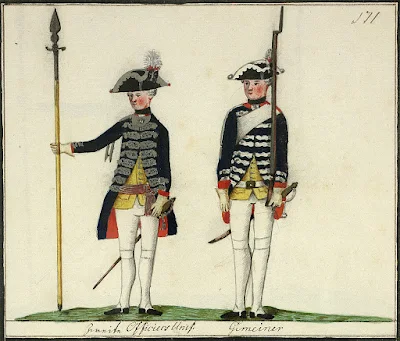The following experiments were held in the early 19th century America and were concerning rates of fire and movement under combat conditions. The experiments are summarized here from data in the book "The American Military Library" (Philadelphia, 1809) by William Duane. The book was written in response to the "Chesapeake Affair" of 1807 and the possibly of war with Great Britain. Duane wrote up his "library" to familiarize United States Militia Officers with current European developments.
Experiment 1
"To try in how short a time a man could fire thirty six rounds of ball cartridge."
Conditions: 36 rounds in pouch; 18 in block, 18 below. A veteran infantryman loading and firing at will at a target 125 yards away.
Results: 3 rounds in 1 minute; 18 rounds in 6 1/2 minutes; 36 rounds in 13 minutes (deducting time to transfer cartridges, which a man needed help in doing). Out if 36 balls, 15 hit the target. (Note: the target is not described, but man sized targets elsewhere are discussed.)
Experiment 2
"Charge of Light Calvary on Artillery"
Conditions: A Light Horseman placed 600 yards (maximum effective give range) from a light 6 pounder.
Result: The first 200 yards at a walk in 95 seconds. The next 150 yards at a trot in 28 seconds. The next 170 yards at a gallop in 13 seconds. The final 80 yards to the gun at the charge in 8 seconds. In this 2 minutes and 24 seconds, the gun was fired once every 11 seconds, for a total of 13 times.
Experiment 3
"Infantry attacking Artillery"
Conditions: A soldier placed 250 yards from the gun (Normal charge distance).
Result: The first 170 yards at the march, the last 80 at the charge. He reached the gun in 102 seconds, during which the gun fired once every 8 seconds for a total of 13 times.
Experiment 4
"Light Cavalry attacking Infantry"
Conditions: Light Horseman placed 400 yards from Infantryman.
Result: Horseman trotted 200 yards, galloped 170 and charged 80 yards. He reached the Infantryman in 49 seconds, during which the Infantryman fired 3 times.
Experiment 5
"Infantry attacking Infantry"
Conditions: Infantryman placed 250 yards from defending Infantryman.
Result: Infantry marched 170 yards in 70 seconds, and charged 80 yards in 20 seconds. During this 90 seconds the defending Infantryman fired 5 times.
Experiment 6
"Infantry line attacking Infantry over uneven ground"
Conditions: The attacking party was required to keep their dress while advancing over rough ground covered with bushes for 250 yards.
Results: The attacker marched 170 yards in 100 seconds, and charged 80 yards in 45 seconds. During this 145 seconds, the defending Infantry fired 7 times.
Experiment 7
"Infantry line attacking Artillery"
Conditions: An Infantry company, formed 3 deep, at 250 yards from the gun.
Result: Infantry marched 170 yards in 100 seconds, and charged 80 yards in 17 seconds. During this 117 seconds the gun fired once every 8 seconds, for a total of 14 times.
Final Results:
The infantry fired a total of 15 times in a total of 284 seconds, for an average of once every 18.9 seconds.
The Artillery fired a total of 40 tines in 334 seconds, for a average of once every 8 seconds.
























































